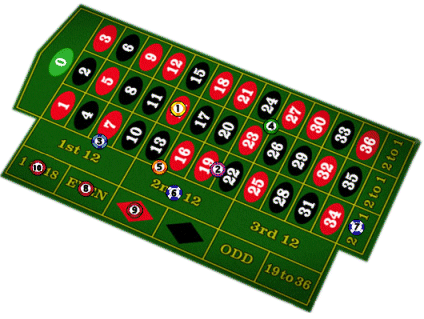Basic explanations of the table game: Roulette
Roulette is one of the most popular casino games. Run by a pit boss and a croupier, it is popular with punters because of the simplicity of the rules. Here's a closer look at this game of chance, which is still enjoying huge popularity around the world.
The history of the roulette table
First appearing in the 17th century, the roulette table was made by Blaise Pascal, a French mathematician of the time. The game evolved somewhat and took its current form in 1796. However, it was marketed and offered to players in casinos in the second half of the 18th century. It very quickly became a real success and quickly spread throughout the world.
There are now two versions, the European and the American. They are distinguished by the box devoted to the number 0. There are two on the American roulette table, while there is only one on the European version.

What do you need to know about the roulette table?
Roulette is a casino game of chance. It is classed as a table game in the same way as poker and blackjack.
Roulette is a game renowned for the simplicity of its rules. It is run by a croupier, who is responsible for giving instructions to anyone who wants to try their luck. As soon as the croupier says: "Place your bets", the players at the table can begin to place their bets. The player must then bet the number of chips they wish on one or more numbers of their choice.
You play alone at the table. If there are other players at the table, they do not influence or compete with your results. Players place their bets independently.
At the end of the betting period, the croupier announces: "the bets are made". He then throws the ball onto the wheel according to the rules. In other words, he throws it in the opposite direction to the one in which the wheel is spinning. In addition, the croupier must spin the wheel three times before stopping it on a number.
The croupier waits until everyone has bet and then throws the ball to the periphery of the spinning roulette wheel. Once stationary, the ball gives the single winning number and colour.
When the game stops, he takes stock of the situation. The lucky ones go home with their winnings, while the losers leave their bets at the casino.
Here's a free, no-registration roulette simulation for you to practise (Flash must be enabled):
Some important additional concepts
The roulette table is a casino game made up of two main elements. These are a mat and a wheel. The mat in question is a grid on which numbers are written in 3 columns. The numbers range from 1 to 36, with a special place for the zero or double zero in the case of an American roulette table. This number is placed at the top of the mat and occupies the entire width of the columns.

As far as the colours of the roulette table are concerned, there are three of them and they vary according to the squares. There are 18 red squares, 18 black squares and the square with the number 0 in green. If it's an American roulette wheel, it's not one, but two squares that are green, each bearing the inscription zero.
On the left and right of the roulette table are the "simple odds". These are: red, black, even, odd, miss and pass. Below this are the dozens and below the numbers the columns.
In a nutshell:
- There are a total of 36 black or red numbers + one or two green squares marked 0 depending on the type of roulette wheel.
- The numbers are divided into 3 lines of 12 digits (2 for 1) + the 0 at the end of the mat.
- In the columns are the thirds (1st dozen, 2nd dozen and 3rd dozen), the colours (red-black), the odd-numbered pairs and finally the passes and misses (1 to 18 and 19 to 36).
To play, place your bets and click "spin" to spin the roulette wheel and start feeling the thrill of the game. Winnings are won or lost immediately after the ball comes to rest.
To place your bets with a genuine operator, I recommend the casinos in my selection.
I invite you to continue reading towards the section: Gains and profits…




